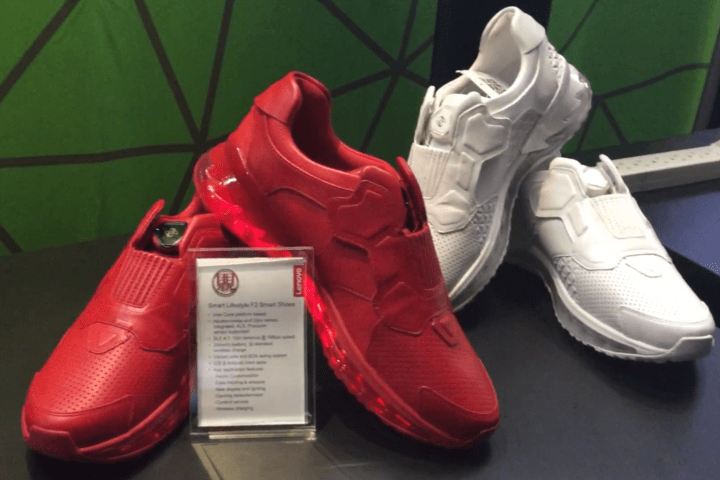
Okay, actually, we did expect it, because it’s not the first time the firm has shown off connected shoes. Lenovo’s Yaoat F2 footwear were actually revealed at CES Asis 2016, and another pair with less functionality was revealed at last year’s TechWorld.
The new pair of shoes is much more useful, it would seem, than the previous model from last year, which judged a user’s mood based on information gleamed from their footsteps. This time around, the Yaoat F2 have a bevy of smart features that aren’t limited to reading how hard you stomp when you’re mad.
To start with, the motion sensors in the shoes deliver all sorts of useful information about distance traveled and pace — the sort of information you’d expect from any fitness tracker. But Yaoat expands on that functionality, and appeals specifically to gamers, by using the tracking info to control related phone games,
The insole is customizable as well, leveraging 3D-printing technology for a perfect fit. What that process will look like exactly remains to be seen, but it’s certainly a neat thought, if Yaoat pulls it off. That’s not the only shoe-related feature either. The F2 are equipped with a custom Vibram outsole, and a BOA lacing system like those found on higher-end cycling shoes.
Finally, the shoes light up. Yes, that’s right, like every PC gaming peripheral for the last year, the F2 is equipped with LEDs that react to music or movement. That may not matter to everyone, but if you want your fancy connected shoes to stand out, it’s an easy way to make sure they do.

Of course, all those features need power, so the F2 sneakers are equipped with Qi wireless charging and a 300mAh battery. That might sound small, but when you consider the shoes are built on Intel’s Curie platform, with Bluetooth 4.1, it should be plenty to keep you moving.
No word yet on release date or price, but the shoes were shown off in all white and vibrant red. While Lenovo is the one who brought the shoes to TechWorld, they were developed by Chinese brand Yaoat, so they aren’t likely to see a U.S. release any time soon.
Editors' Recommendations
- These Apple sneakers are rare, pricey, and very 1990s
- How about a pair of Xbox-inspired sneakers by Adidas?


